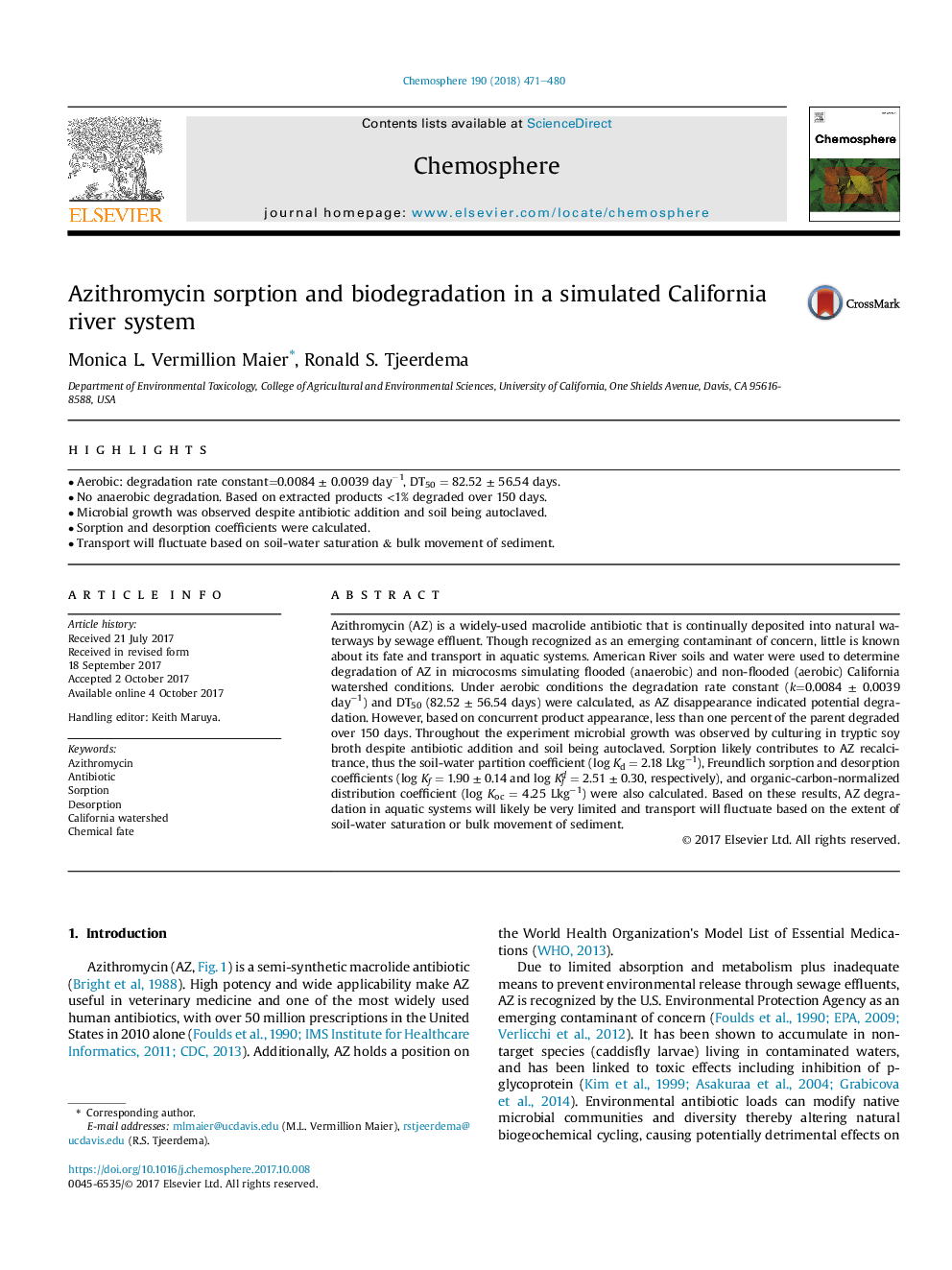| کد مقاله | کد نشریه | سال انتشار | مقاله انگلیسی | نسخه تمام متن |
|---|---|---|---|---|
| 5745783 | 1618781 | 2018 | 10 صفحه PDF | دانلود رایگان |
- Aerobic: degradation rate constant=0.0084 ± 0.0039 dayâ1, DT50 = 82.52 ± 56.54 days.
- No anaerobic degradation. Based on extracted products <1% degraded over 150 days.
- Microbial growth was observed despite antibiotic addition and soil being autoclaved.
- Sorption and desorption coefficients were calculated.
- Transport will fluctuate based on soil-water saturation & bulk movement of sediment.
Azithromycin (AZ) is a widely-used macrolide antibiotic that is continually deposited into natural waterways by sewage effluent. Though recognized as an emerging contaminant of concern, little is known about its fate and transport in aquatic systems. American River soils and water were used to determine degradation of AZ in microcosms simulating flooded (anaerobic) and non-flooded (aerobic) California watershed conditions. Under aerobic conditions the degradation rate constant (k=0.0084 ± 0.0039 dayâ1) and DT50 (82.52 ± 56.54 days) were calculated, as AZ disappearance indicated potential degradation. However, based on concurrent product appearance, less than one percent of the parent degraded over 150 days. Throughout the experiment microbial growth was observed by culturing in tryptic soy broth despite antibiotic addition and soil being autoclaved. Sorption likely contributes to AZ recalcitrance, thus the soil-water partition coefficient (log Kd = 2.18 Lkgâ1), Freundlich sorption and desorption coefficients (log Kf = 1.90 ± 0.14 and log Kfd = 2.51 ± 0.30, respectively), and organic-carbon-normalized distribution coefficient (log Koc = 4.25 Lkgâ1) were also calculated. Based on these results, AZ degradation in aquatic systems will likely be very limited and transport will fluctuate based on the extent of soil-water saturation or bulk movement of sediment.
Journal: Chemosphere - Volume 190, January 2018, Pages 471-480
